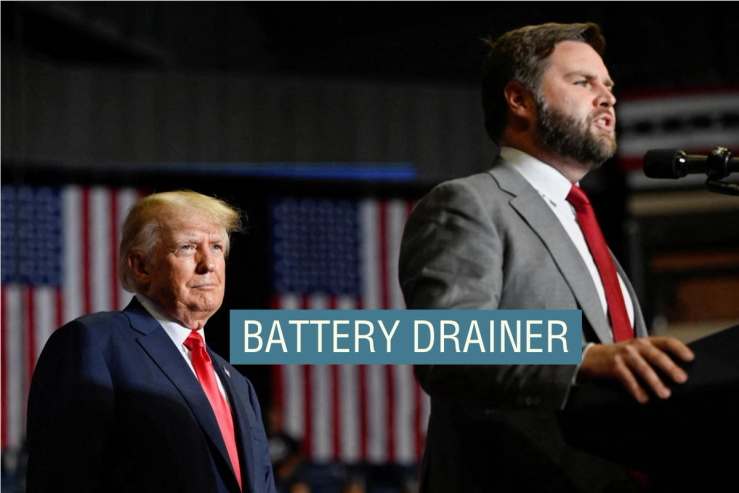The News
JD Vance, Donald Trump’s vice-presidential running mate, is outspoken about undermining President Joe Biden’s climate and energy agenda, which puts the Republican ticket at odds with the climate and economic trajectory in the junior senator’s home state.
Vance’s advocacy for natural gas drilling was a pillar of his political platform in Ohio, and he’s a fierce opponent of electric vehicles, having introduced legislation to replace the Biden administration’s tax credit for EV purchases with one for US-made gasoline and diesel vehicles. During Biden’s term in office, Vance’s stance on climate science flip-flopped from acceptance — “of course we have a climate problem in our society,” he said in 2020 — to denial, saying in 2022 that he’s “skeptical of the idea that climate change is caused purely by man.” He’s also criticized “ridiculous, ugly” wind and solar farms, and sponsored legislation to roll back greenhouse gas regulations.
In this article:
Tim’s view
Vance’s embrace of Trumpian energy policy runs sharply against Ohio’s own trajectory. As Vance has become more of a clean energy skeptic, his state has leaned more into the energy transition and been among the biggest beneficiaries of subsidies from Biden’s climate triumph: the Inflation Reduction Act. And although there’s now little daylight between Vance and Trump on energy, their joint playbook would entail more personal political risk for Vance, who would have to place a risky wager on natural gas prices rising enough that jobs from drilling can make up for any lost growth in the state’s new crop of battery and solar factories.
In a sense, Vance’s energy strategy isn’t much different from Biden’s, in that it relies on a combination of tax credits and protectionist trade barriers to help domestic industries compete with China. The difference is in the industries they aim to support. For Biden, tariffs on Chinese clean tech imports go hand-in-hand with domestic subsidies for the same technologies, with the aim of ultimately competing directly with China on key industries of the future. Vance sees Biden’s EV subsidies undermining those tariffs, however, by channeling US consumer spending into supply chains that are still dominated by Chinese manufacturers.
Ohio is a good case study of Biden’s approach. EV and battery manufacturing have drawn at least $9 billion in investment to the state since the IRA was passed two years ago, including a massive factory to produce batteries for Honda that is nearing completion. Clean energy-related companies now employ about 114,000 people in Ohio, compared to 71,000 working in oil and gas. Gutting EV subsidies would put many of those jobs at risk. And if the second Trump administration also raises trade barriers on clean tech imports (and thus their retail prices), the tens of thousands of jobs linked to installing solar panels and the like would also be imperiled.
Vance’s theory is that the risk to net job creation can be offset by plowing more support into fossil fuels. But oil and gas jobs follow those commodities’ volatile prices. Relying on them for long-term job creation, while allowing China to widen its already-vast lead on EVs and renewables, could be short-sighted. At the same time, US automakers, which have already sunk billions into building out their EV divisions, aren’t going to toss those plans out the window with a change in administration — a Trump-Vance White House will just mean a longer and more painful road to make EVs profitable.
Room for Disagreement
Outspoken as Vance may be, vice presidents rarely drive substantive policy decisions — and even less so under a leader as mercurial and domineering as Trump. Adding Vance to the ticket likely changes little in practice about what to expect from a policy point of view during Trump’s second term.
The View From Vienna
Vance is among the members of Congress most opposed to aid for Ukraine, and while his public statements on the war have focused on military hardware, some European officials are already worried about what his influence could mean for Ukraine’s energy recovery. In an interview with Semafor at his office in Vienna this week, Dirk Buschle, deputy director of the Energy Community, a European Union-administered organization that oversees the delivery of energy-related aid to Ukraine, said he is bracing for cuts to the US financing that is helping to restore Ukraine’s battered electric grid and replace damaged fossil fuel plants with renewables. “This doesn’t bode well,” Buschle said, of the upcoming US election. “It would be one big ally falling potentially, so this is a concern.”


